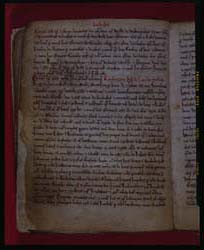 |
 |
 |
 |
 |
 |
 |
|
Why did men and women wish to make grants to the monks of Rievaulx? (5/6) Many of those who became benefactors of the abbey were in some way connected with the community, either through Walter Espec (as his tenants, family or neighbours) or through a family member who had entered the community as a monk or lay-brother. Others were attracted by Rievaulx’s reputation and hoped to secure spiritual benefits, such as prayers and masses in return for their gifts. As the quality of prayer was equated with the piety of the supplicant (the one who prayed), the renowned spirituality of the Rievaulx monks meant that their abbey was seen as a good investment for the donor; it was considered to offer a more secure path to salvation. The high profile of Abbot William would have also attracted patrons and recruits to Rievaulx. William played a leading role in ecclesiastical and political affairs, such as in the 1130s when he visited and advised Gilbert of Sempringham on the administration of his order for women, the Order of Sempringham. Gilbert followed William’s suggestion to introduce lay-sisters to help with the daily running of the community. In the 1140s Abbot William played a prominent role in the deposition of William Fitzherbert from the See of York. |
